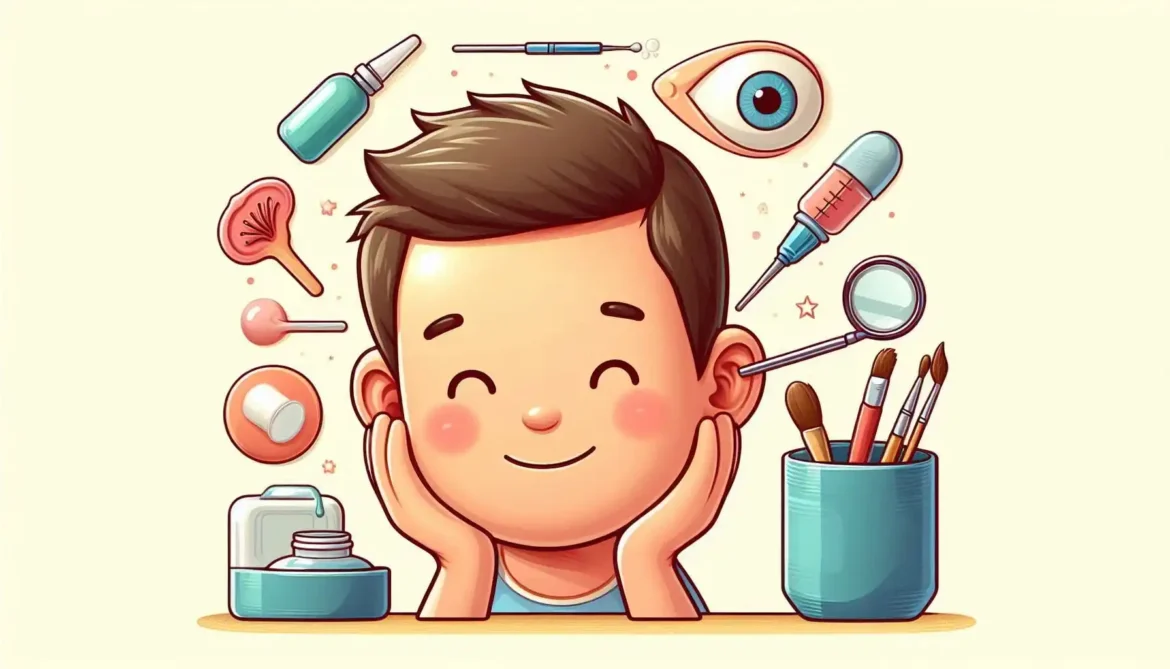
Ear Wax: The Often-Misunderstood Substance That’s Essential for Ear Health
As we go about our daily lives, we often take our bodily functions for granted. One such function is the production of ear wax, a natural substance that has sparked debate about its benefits and drawbacks. In this article, we will delve into the world of ear wax, exploring its composition, purpose, and the age-old question: is it beneficial or harmful?
What is Ear Wax?
Ear wax, also known as cerumen, is a natural substance produced by the glands in our ears. It is a mixture of dead skin cells, hair, and secretions from the ceruminous and sebaceous glands. Ear wax is typically yellowish or brownish in color and has a thick, sticky consistency. We have all experienced the sensation of ear wax at some point, whether it’s the feeling of a clogged ear or the sight of a yellowish discharge on our earbuds.
| Component | Description |
| Dead skin cells | Sheds from the ear canal |
| Hair | From the ear canal and surrounding areas |
| Ceruminous gland secretions | Produces a watery substance |
| Sebaceous gland secretions | Produces a thick, oily substance |
As the famous saying goes:
“The ears are the most important organs of the body, for they are the gateways to the soul.” We couldn’t agree more, and understanding ear wax is essential to maintaining good ear health.
The Purpose of Ear Wax
So, why do we produce ear wax in the first place? The answer lies in its numerous benefits. Ear wax serves several purposes, including:
- Protecting the ear canal: Ear wax acts as a barrier, preventing dirt, dust, and other foreign particles from entering the ear canal and potentially causing harm.
- Lubricating the ear canal: Ear wax helps to keep the ear canal moist and lubricated, reducing the risk of dryness and irritation.
- Antibacterial properties: Ear wax has been shown to have antibacterial properties, helping to prevent infections and promoting a healthy ear environment.
- Supporting ear health: Ear wax helps to regulate the pH balance in the ear canal, preventing the growth of harmful bacteria and fungi.
Here are some key benefits of ear wax:
- Helps to prevent ear infections
- Reduces the risk of ear damage
- Keeps the ear canal clean and dry
- Supports overall ear health
Is Ear Wax Beneficial or Harmful?
Now that we’ve explored the benefits of ear wax, it’s time to address the question on everyone’s mind: is ear wax beneficial or harmful? The answer is not a simple one. While ear wax is essential for maintaining good ear health, excessive ear wax can be problematic.
Excessive ear wax can lead to:
- Ear blockages: A buildup of ear wax can cause blockages in the ear canal, leading to hearing loss, discomfort, and even pain.
- Ear infections: If ear wax is not properly cleaned, it can become a breeding ground for bacteria, leading to infections and other complications.
- Itchiness and irritation: Excessive ear wax can cause itchiness and irritation in the ear canal, leading to discomfort and potentially even infection.
On the other hand, a lack of ear wax can also be problematic:
- Dry ear canal: A dry ear canal can become irritated and inflamed, leading to discomfort and potentially even infection.
- Increased risk of infection: Without ear wax to protect the ear canal, we are more susceptible to infections and other complications.
To keep our ear wax in check, here are some tips:
- Avoid using Q-tips: Q-tips can push ear wax further into the ear canal, causing blockages and other problems.
- Use ear drops: Ear drops can help to loosen and remove excess ear wax.
- Get regular check-ups: Regular check-ups with a healthcare professional can help to identify any ear wax-related problems early on.
Conclusion
In conclusion, ear wax is a natural substance that plays a vital role in maintaining good ear health. While excessive ear wax can be problematic, a lack of ear wax can also lead to complications. By understanding the benefits and drawbacks of ear wax, we can take steps to promote healthy ear wax production and reduce the risk of ear-related problems.
As we’ve seen, ear wax is a complex substance that deserves our attention and care. By adopting good ear hygiene practices and seeking regular check-ups with a healthcare professional, we can keep our ears healthy and our ear wax in balance.
Here are some key takeaways:
- Ear wax is a natural substance that protects and lubricates the ear canal
- Excessive ear wax can lead to blockages, infections, and other complications
- A lack of ear wax can lead to dryness, itchiness, and increased risk of infection
- Good ear hygiene practices, such as avoiding Q-tips and using ear drops, can help to promote healthy ear wax production
By following these tips and staying informed about ear wax, we can take control of our ear health and reduce the risk of ear-related problems. So next time you notice ear wax, remember: it’s not just a nuisance, it’s an important part of our bodily functions.
FAQs
Q: What is ear wax and why is it important?
A: Ear wax, also known as cerumen, is a natural substance produced by the glands in the ear canal. It helps to protect the ear by trapping dust, bacteria, and other small particles that could potentially damage the eardrum or ear canal.
Q: How often should I clean my ears?
A: It’s generally recommended to clean the outer ear with a washcloth, but avoid inserting anything into the ear canal. The ear canal is self-cleaning, and excessive cleaning can push ear wax further into the ear and potentially cause blockages.
Q: How do I know if I have excessive ear wax?
A: Symptoms of excessive ear wax include hearing loss, itching, fullness or blockage in the ear, and discharge or odor. If you experience any of these symptoms, consult a healthcare professional for proper evaluation and treatment.
Q: What is the best way to remove ear wax?
A: The best way to remove ear wax is to use ear drops, such as hydrogen peroxide or ear wax dissolvers, to soften the wax, and then use a bulb syringe to gently flush out the ear canal. Avoid using cotton swabs (Q-tips), as they can push the wax further into the ear and potentially damage the eardrum.
Q: Can I use cotton swabs (Q-tips) to remove ear wax?
A: No, it’s not recommended to use cotton swabs (Q-tips) to remove ear wax. Inserting a cotton swab into the ear canal can push the wax further into the ear, potentially causing a blockage or damaging the eardrum. Additionally, using cotton swabs can also introduce bacteria into the ear canal, leading to infection.
Q: What are some other don’ts when it comes to ear wax removal?
A: Don’t use your fingers, hairpins, or other objects to remove ear wax, as this can cause damage to the ear canal or eardrum. Don’t use ear candles, as they are not effective and can cause burns or other injuries. Don’t use harsh chemicals or solvents to remove ear wax, as they can damage the ear canal or eardrum.
Q: What are some do’s when it comes to ear wax removal?
A: Do use ear drops, such as hydrogen peroxide or ear wax dissolvers, to soften the wax before attempting to remove it. Do use a bulb syringe to gently flush out the ear canal. Do consult a healthcare professional if you experience symptoms of excessive ear wax or if you’re unsure about how to remove ear wax safely.
Q: Can I remove ear wax myself, or do I need to see a doctor?
A: If you’re unsure about how to remove ear wax or if you experience symptoms of excessive ear wax, it’s best to consult a healthcare professional. They can evaluate your ear and provide guidance on the best way to remove the wax. In some cases, a healthcare professional may need to use specialized equipment to remove the wax, especially if it’s impacted or causing significant symptoms.
Q: How can I prevent ear wax build-up?
A: To prevent ear wax build-up, avoid using earplugs or earbuds that can push wax further into the ear. Keep the ear canal dry, as moisture can contribute to wax build-up. Use ear drops, such as hydrogen peroxide, to help keep the ear canal clean and dry. Regularly clean the outer ear with a washcloth, but avoid inserting anything into the ear canal.
Medical Disclaimer: The information provided on this website is for general educational and informational purposes only and is not intended as a substitute for professional medical advice, diagnosis, or treatment. Always seek the advice of your physician or other qualified health provider with any questions you may have regarding a medical condition. Never disregard professional medical advice or delay in seeking it because of something you have read on this website.



